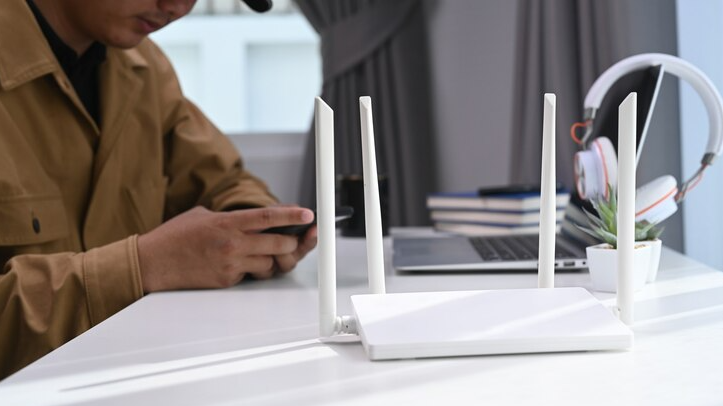The Promise Of Long-Distance Wireless Contacts Within Organizations

In an era where remote work is becoming increasingly prevalent, the need for seamless communication across distances has never been more critical. With the advancement of technology, particularly in the realm of wireless communication, organizations are now presented with a promising solution: long-distance wireless contacts. This innovative approach holds the potential to revolutionize intra-organizational communication, fostering collaboration, efficiency, and flexibility like never before.
Long-distance wireless contacts, often facilitated by technologies like Bluetooth, Wi-Fi, and emerging solutions such as Li-Fi (Light Fidelity), offer a myriad of benefits for organizations operating in today’s dynamic landscape. Let’s explore how this technology is reshaping the way businesses communicate and collaborate:
Flexibility and Mobility
Traditional communication methods often tether individuals to specific locations, limiting their ability to collaborate effectively. Long-distance wireless contacts liberate employees from these constraints, allowing them to communicate seamlessly regardless of their physical location. Whether they’re working from home, on a business trip, or within the office premises, employees can stay connected effortlessly.
Enhanced Collaboration
Effective collaboration lies at the heart of organizational success. Long-distance wireless contacts empower teams to collaborate in real-time, irrespective of geographical barriers. Whether it’s brainstorming ideas, sharing documents, or conducting virtual meetings, this technology ensures that distance no longer impedes collaboration.
Improved Productivity
By eliminating the delays associated with traditional communication methods, long-distance wireless contacts can significantly enhance productivity within organizations. Employees can quickly reach out to colleagues, resolve issues promptly, and make informed decisions without being hindered by communication barriers.
Cost-Efficiency
Investing in long-distance wireless contacts can lead to substantial cost savings for organizations. By leveraging existing infrastructure and adopting innovative solutions, businesses can minimize the expenses associated with traditional communication channels, such as landline phones and in-person meetings. Moreover, reduced travel expenses and overhead costs further contribute to the overall cost-efficiency of this approach.
Scalability and Adaptability
As organizations grow and evolve, so do their communication needs. Long-distance wireless contacts offer unparalleled scalability and adaptability, allowing businesses to expand their communication networks effortlessly. Whether scaling operations globally or accommodating remote workforce trends, this technology provides the flexibility to meet evolving organizational requirements.
Enhanced Security
Security concerns often deter organizations from embracing wireless communication technologies. However, advancements in encryption protocols and security measures have made long-distance wireless contacts increasingly secure. By implementing robust security protocols, organizations can safeguard sensitive information and ensure data integrity across their communication channels.
Environmental Sustainability
In an age of growing environmental concern, long-distance wireless contacts offer a more eco-friendly alternative to traditional communication methods. By reducing the need for physical travel and minimizing paper consumption associated with printed documents, organizations can contribute to environmental conservation efforts.
Remote Monitoring and Control
In industries where remote monitoring and control are essential, such as manufacturing, energy, and healthcare, long-distance wireless contacts offer invaluable capabilities. Through IoT (Internet of Things) devices and sensors connected via wireless networks, organizations can remotely monitor equipment, collect data in real time, and even control operations from afar. This not only enhances operational efficiency but also minimizes the need for on-site personnel, reducing risks and costs associated with manual monitoring.
Dynamic Workforce Management
In industries characterized by dynamic workforce requirements, such as retail, hospitality, and event management, long-distance wireless contacts offer valuable tools for workforce management and coordination. Managers can communicate with staff members, assign tasks, and track performance in real-time, regardless of their location. This ensures efficient resource allocation, optimal staffing levels, and timely response to changing demands, thereby enhancing customer satisfaction and operational performance.
Crisis Management and Disaster Recovery
During emergencies, natural disasters, or crises, effective communication is critical for coordinating response efforts and ensuring the safety and well-being of individuals. Long-distance wireless contacts provide resilient communication channels that can withstand disruptions to traditional infrastructure, enabling organizations to maintain communication and coordination even in challenging circumstances. This enhances preparedness, responsiveness, and resilience in the face of unforeseen events.
Conclusion
In conclusion, the promise of long-distance wireless contacts within organizations is undeniable. By embracing this innovative approach to communication, businesses can unlock new levels of collaboration, efficiency, and agility, thereby gaining a competitive edge in today’s fast-paced business landscape. As technology continues to evolve, organizations must seize the opportunity to leverage long-distance wireless contacts as a catalyst for growth and transformation.
